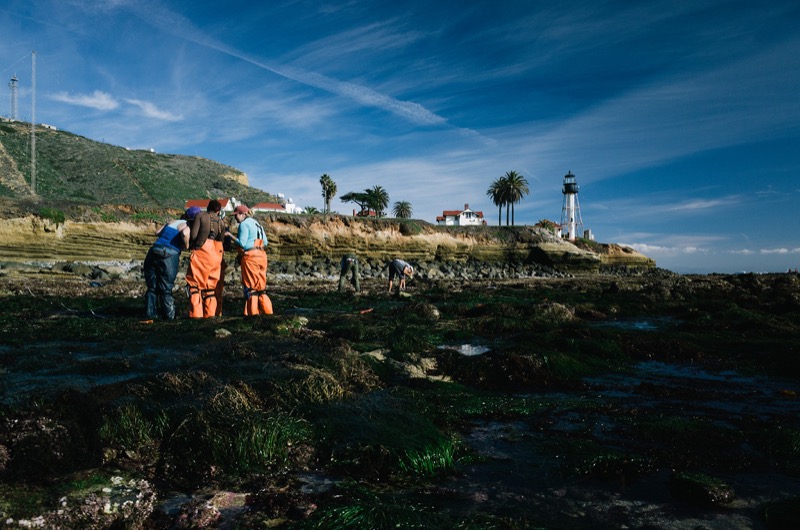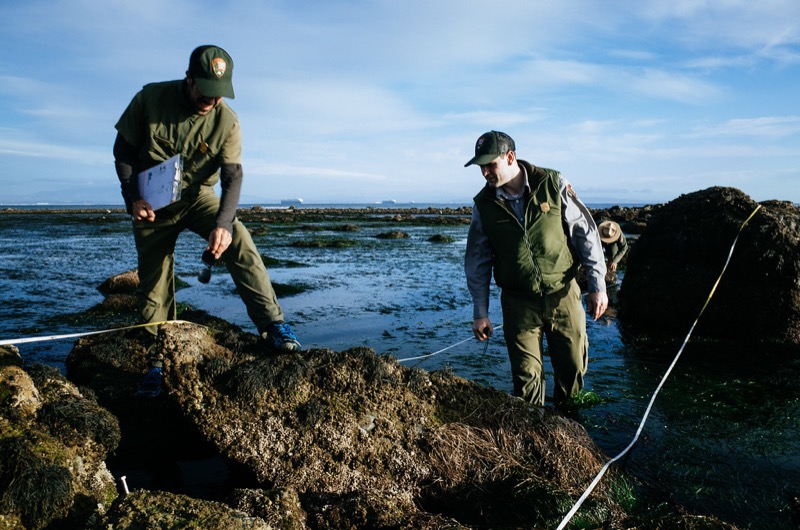
Last week, the Cabrillo tidepools were filled with more scientists than normal. Stretching out several long white transect tapes and quickly scoring notes on their data sheets, members of the Coastal Biodiversity Survey set out to count and identify the resident marine species of Cabrillo.
What started in 2001 as a way to measure diversity and abundance of seaweeds and invertebrates living in the rocky intertidal, the Survey has grown to include 175 sites spanning Alaska to Mexico. Every 3-5 years scientists visit these areas with the goal of quantifying ecological shifts within and among locations.
Cabrillo National Monument and the Coastal Biodiversity Survey work in conjunction with a larger consortium known as the Multi-Agency Rocky Intertidal Network (MARINe). MARINe is a partnership of agencies, universities, and private groups committed to determining the health of the rocky intertidal habitat and providing this information to the public. Together these groups conduct regular meetings to decide on protocols and insure that surveys are conducted in the same manner. Findings from this extensive and unique long-term monitoring program indicate that many rocky shores along the coast, particularly those near urban centers, are under stress, with some intertidal populations changing significantly over the past several decades.

Melissa Douglas, a scientist with the Coastal Biodiversity Survey, expresses her thoughts on the process, “After learning about MARINe, over 12 years ago, I have felt drawn to the importance and need for long-term monitoring, especially on such a large temporal and spatial scale. Having a baseline of what is "normal" for a species or community is crucial to being able to detect natural and anthropogenic (human-derived) changes. Without knowing what the natural fluctuations look like, how can we tell if there is a change? Having this knowledge is the only way we can detect changes such as the impact of an oil spill, assess if a disease such as Sea Star Wasting Syndrome is affecting sea star populations, and figure out if marine reserves are doing their job.”
To learn more about the monitoring conducted by MARINe and the Coastal Biodiversity Survey or to get involved, please visit PacificRockyIntertidal.org.
